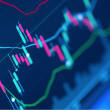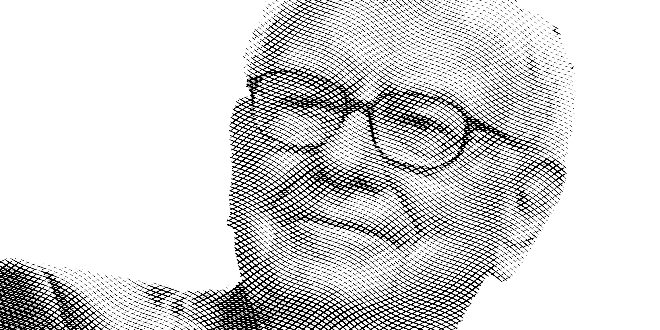by Jurrien Timmer, Director of Global Macro, Fidelity Investments
An inverted yield curve often precedes recessions. But this time, it's complicated.
Key takeaways
- The yield curve inverted last week, with interest rates on 2-year Treasurys rising higher than rates on 10-year Treasurys.
- An inversion is often seen as an omen of recession.
- Historically, however, there have been unpredictable and often long time lags between inversion and the start of a recession.
- High near-term inflation and other factors may also be muddying the message the yield curve is giving.
Part of the yield curve inverted last week. The yield curve shows interest rates for bonds of different maturities but the same credit quality, such as for Treasurys of different maturities. Normally, in times of economic growth, the yield curve is upward sloping, meaning that long-term interest rates are higher than short-term interest rates. This makes intuitive sense—it's riskier to lend someone money for 10 years than it would be to lend them money for a day, and so a longer-term loan should deliver a larger return.
When long-term rates fall below short-term rates (or conversely, short-term rates rise above long-term rates), it's called an inversion. And crucially, the yield curve has historically tended to invert in the lead-up to a recession. Last week, this occurred for a highly watched segment of the yield curve, with yields on 2-year Treasurys rising above yields on 10-year Treasurys.
Here are my 2 cents on this development: Yes, the curve is officially inverted and has an impressive track record of preceding recessions. But it tends to do so with wide-ranging lead times, inverting anywhere from 6 months to 4 years before a recession begins. Moreover, there are enough nuances these days to make me not want to leap to conclusions quite yet.
First of all, high near-term inflation is muddying the waters. Nominal interest rates (i.e., published interest rates, with no adjustments for inflation) generally incorporate an "inflation premium." Bond investors, after all, want to be compensated for future inflation, and so typically demand higher rates of return when they expect higher inflation.
Currently, high near-term inflation expectations are pushing up shorter-term interest rates. One way to understand this impact is by looking at yields on Treasury Inflation-Protected Securities (TIPS). Because TIPS increase principal and interest payments to keep up with inflation, yields on TIPS generally don't factor in an inflation premium. And currently, yields on short-term TIPS are actually much more negative than yields on long-term TIPS. This indicates that the TIPS real-rate curve—meaning, the yield curve after backing out inflation expectations—is actually steeply upward sloping.
Other nuances also give me pause about jumping to conclusions. For example, some argue for backing the so-called "term premium" out of the yield curve (the term premium is considered to be the portion of return, included in interest rates, that compensates investors for lending for longer periods of time). After making this adjustment, the yield curve would still be steeply upward sloping.
Others call for calculating a forward curve based on TIPS real yields, to mitigate some of the distortions of such high near-term inflation. On that measure, we get a real curve that is as flat as a pancake—with short- and long-term rates around the same level.
Although one might argue over which of these adjustments is more or less valid than a regular yield curve, these nuances give me pause.
Looking for a soft landing
Of course, no discussion of recession risk is complete without mentioning the Fed. To say that the Fed is trying to thread a needle in its attempt to land this rocket ship of an economy would be an understatement. The Fed is attempting to slay the inflation dragon without also slaying the economy. It's a game of chicken against inflation.
Based on market expectations and Fed signaling, it appears that the Fed may plan to do this with multiple 0.50 percentage point hikes—raising short-term interest rates high enough to cool down inflation. Hopefully it works, and the Fed can tame the inflation beast just in time, before it eases rates back down to the 2.5% range (which in my opinion would represent a neutral zone for rates, meaning a level that is neither restrictive nor accommodative).
This next chart shows how odd the current Fed cycle is. The market expects a rapid 3-percentage-point upward lurch over the next year or so, taking rates well above neutral and into restrictive territory, followed by 1 percentage point of easing back to about 2.5%.
In my opinion, this market has some parallels to the 1994 Fed cycle. Back then, the Fed, under Chair Alan Greenspan, raised the fed funds rate 3 percentage points and then cut it by 0.75 percentage points in 1995. But 1994 was a successful pre-emptive strike against inflation, whereas the current cycle is highly reactive. Come to think of it, maybe the market expects the Fed to cut rates by 1 percentage point after 2023 because its rapid rate hikes will "break" something in the economy, requiring a new round of rate cuts?
Indeed, "monetary roulette" produces binary outcomes: either recession or expansion. The hope is that the economy is robust enough to withstand the shock therapy that the Fed is about to dole out.
About the expert

Jurrien Timmer is the director of global macro in Fidelity's Global Asset Allocation Division, specializing in global macro strategy and active asset allocation. He joined Fidelity in 1995 as a technical research analyst.
Copyright © Fidelity Investments














